Amazing Animals #15 The Spotted Hyena
One of the world’s most misunderstood animals. They are portrayed in Disney films as the "bad guys" that are cunning and spiteful whereas that couldn’t of been further from the truth.
When I first heard the laughing of a Hyena it filled me with both excitement and pure dread, it was so loud and frightening that I wasn't sure if I wanted to run and lock myself into the nearest building, or go see what they were up to.
I am lucky to be able to see Hyena every day, they are absolutely amazing to both look at and be around, with that in mind I couldn't not include them in today’s species highlight.
What do they look like
The most common misconception made by people are that Hyenas are related to Canines, at a glance they do appear to resemble Dogs, however they are actually more closely related to Felids, they are part of the Feliformia suborder which includes Cats, Civets and Mongoose.
The Spotted Hyena can be found throughout a wide range of territories across sub-Saharan Africa, they are the largest species of Hyena growing to lengths of 1.8 meters and reaching weights of up to 86 kg’s, they are yellow/grey in their colouration (this changes dramatically with age) and are adorned with black spots in differing patterns across their body, their fur is also shorter than that of other Hyena species and is quite coarse in texture.
One of the first noticeable features of the Hyena is their stocky build, this is not just for show, they have very strong and well-developed muscles around their neck and forequarters but have underdeveloped hindquarters in relation to the rest of their body.
The Spotted Hyena is the only Hyena species that possess rounded ears and they have significantly larger skulls in relation to their body when compared to other Hyena species.
They also have specially adapted jaws that are not merely designed for feeding on scavenged scraps, they have a series of pre-molars that enable to the Hyena to crush bones, they also possess Carnassial teeth which are a common trait in Carnivora, and the positioning of their teeth allows them to consume bones without blunting their Canine or Carnassial teeth.
Spotted Hyena Social Behaviour
Spotted Hyenas are widely considered to be the most social member of the Carnivora family, they often live in large social structures referred to as ‘clans’ and each clan can consist of up to 80 individuals, the size of each clan is dependent on the nature of their food source, for instance if one clan relies on migratory animals the clan will likely be small, whereas a clan that feeds on sedentary animals will likely be greater in numbers.
The Hyena clan is a very tight-knit group of unified individuals, even more so than that of wolf-packs, the clan system is profoundly matriarchal with even the lowest ranking female placing higher than the highest ranking male, this is mainly attributed to the fact that females are on average 10% larger than males and are androgenized, meaning they have elevated levels of certain hormones that result in them having increased aggressive tendencies.
The ranking of the system is dictated by power-plays and birth rights, the clan has a Nepotistic approach meaning that female cubs born to the highest ranking female are instantly ranked higher than every other female in the group, interestingly the levels of androgynous hormones in their offspring will also be higher in higher ranking females, the males may also rank higher during infancy though once matured they will likely leave the clan between the age of 2-3, females more often than not choose to remain with their natal clan.Their clan society is not entirely fixed in its territory and large clans will often splinter off in to sub-groups when foraging or hunting, this tendency results in several females achieving high ranks within the clan and they are known as Matrillines.
The Spotted Hyena are also sophisticated in their approach to breeding, and their offspring are aware of even distant relatives that may be separated by 2-3 generations, this results in the clan maintaining a healthy bloodline as abnormalities brought on through incestuous breeding are rare.
On the Hunt
During the daylight hours Spotted Hyena choose to avoid the blazing heat, they sleep in excavated Aardvark burrows, holes or just simply under trees, generally just anywhere that supplies them shade, this in turn means that the Spotted Hyena are nocturnal and will only very rarely search for food during the day.
Throughout their range there are very species of animal that are not on the Hyenas menu, generally they will prey on animals that have a body mass of less than 200kg, though on rare occasions they may opt to attempt to bring down much larger prey such as Giraffes or Buffalo.
Despite their large Clan sizes they often only hunt in small groups and the size of the hunt is entirely dependent on the prey they are hunting, when hunting Gazelle and Wildebeest they will hunt in groups of 1-4 animals, whereas when they are hunting Zebra the hunting party may consist of anywhere from 10 to 25 animals, this is due to the fact that Zebra move as a tight group, to successfully remove one from the herd may require a persistent onslaught of attempts which is much more easily achieved as a large group.
Most of their prey is capable of putting up quite the chase and it is not uncommon for the Hyena to chase their prey over distances ranging from 3 to 10 kilometres, luckily the Hyena are competent endurance runners and are also capable of reaching speed of up to 60 Km/h
Hunting aside they are however still opportunistic feeders and will steal or scavenge from other Carnivores successful hunts, generally speaking the only animal capable of fending off the Hyenas interest, or even stealing from the Hyena are an established pride of Lions, contrary to popular belief, Lions actually steal from Hyena kills at a much higher rate than Hyenas steal from Lion kills, with even one male African Lion able to completely take control of a carcass from a large clan.
What are their senses like?
Aside from being reliant on their vision for hunts, they do still have a keen sense of smell which they use effectively to identify Carrion and to detect if rival Clans have entered their territory; they are capable of picking up and tracking scents over distances ranging from 1-2 kilometres.
The rounded shape of their ears allows them to trap and funnel sound waves effectively, this gives them a very keen sense of hearing, so well adapted that they are in fact able to hear predators making a kill at distances of up to 10 kilometres, this helps them when foraging/scavenging and may also help them to identify potential hunts.
One of the Most Powerful bites in Nature
The immense pressure that they are able to exert within their jaws makes them well adapted to consuming incredibly tough materials such as bone and cartilage, in fact close observation of their feeding habits has shown that Hyenas will happily feed on a carcass that is devoid of any meat.
Their immense jaw pressure also allows them to gain the most energy in feeding in relation to energy expended during the hunt, as the Hyena are able to devour bones and cartilage they are able to make use of close to 100% of a carcass, this is where they differ from other predators in the region, should a Lion encounter a corpse to tough or time consuming to eat they will often abandon it, whereas the Hyena generally consumes the whole carcass.
Amazing Facts
- The iconic laugh attributed to Hyenas is not a sign of amusement; Spotted Hyenas actually laugh to alert other Clan members to a food source and also to establish social status within a Clan, the frequency of the laugh will depend on the Hyenas age and its position within the Clan.
- Hyenas are ruthless hunters, large Clans of Hyena will often target young or sick animals, including Lion cubs and Elephant Calves, they use their immense numbers to disorient and gradually injure individual animals.
- Their intelligence rivals that of primates, Spotted Hyena have an enlarged frontal cortex when compared to other Carnivora, this trait allows them to form highly complex social structures and also enables them to solve problems, a study conducted by Duke University showed that a captive pair of Spotted Hyena were able to solve all of the trialled problems, and more impressively they were able to do so in complete silence, increased vocal activity usually displays frustration or confusion, a trait not observed in the Hyena.
- The Female Spotted Hyena is on average 10% larger than the average male Hyena.
- The Female Spotted Hyena is the only mammal in the Animal Kingdom that does not possess an external vaginal opening, she instead has a pseudo-penis that is similar in appearance to the Male Hyenas penis, and she uses this organ for urination, copulation and birth.
- Up to 60% of all Hyena Cubs die during birth, due to the structure of their mother’s pseudo-penis the most common cause of death is suffocation in the event that the cub becomes stuck in the birthing canal.
- The Female Hyena is capable of achieving an erection in the same way that a Male Hyena can, this can be observed during times of excitement such as play-fighting and greetings.
- There is a recorded sighting of one Hyena once taking down a Zebra on its own, if you remember most Zebra hunts involve 10-25 individuals.
- Hyena have between 2-4 Cubs per litter, this poses an immediate issue as the mother only has two Nipples, other Hyena will not feed the young and this can result in litters of more than two Cubs fighting each other to the death to secure a food source.
- Hyena Cubs are not weaned until 10-18 months, this is due to the fact that most hunts occur at distances far from their dens, the Cubs do not accompany the adults on hunts.
- Infanticide is not uncommon within Hyena Clans; competing females may kill high ranking Cubs should their mother leave their side.
- Lions, Wild Dogs and other Hyena predate on Spotted Hyena and Lions will actively hunt them should the opportunity arise, though sometimes the Hyena are able to turn the tables.
Final Thoughts
So as you can see, the Spotted Hyena are nothing like the animals that most people have grown to think of after watching the Lion King, they are highly complex creatures that can appear both powerful and graceful in their behaviour, they are intelligent beings that are not too dissimilar from Chimpanzees and Gorillas in their social behaviour, and up close they appear majestic, well-groomed and muscular.
I feel quite privileged that I have the opportunity to see them up close in my place of work, to observe their behaviours and to hear their laughs moments after food has been introduced to their enclosure, it's an experience that never gets old.
Sadly in the wild their numbers are beginning to fall, habitat loss and illegal poaching are posing increased threats to this wonderful species and without intervention they will likely become just another statistic to add to the number of endangered species on the African continent, hopefully it won’t be too late before the necessary steps are taken to preserve this magnificent animal.
Content Sources
If you Enjoyed this article feel free to check out some of my previous editions of Amazing animals.
- The Harp Seal
- The Clown Fish
- The Greater Bird of Paradise
- The Reindeer
- The Three-Toed Sloth
- The Hippopotamus

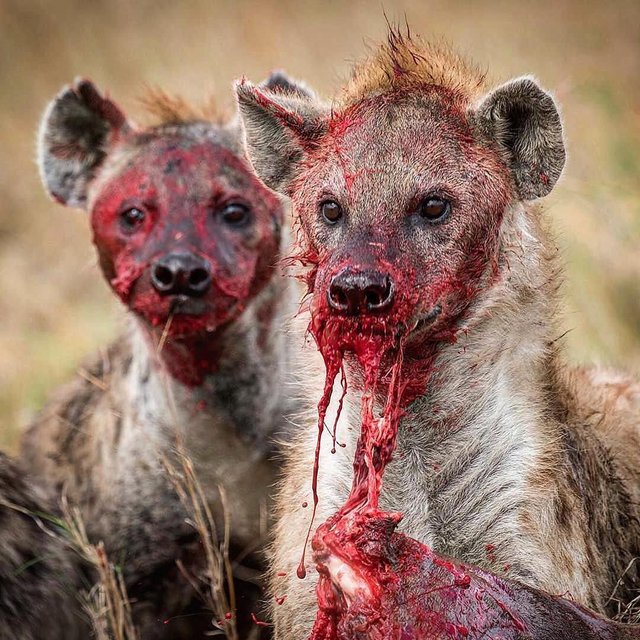
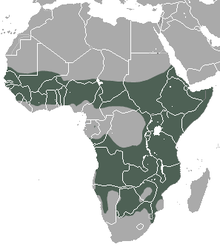
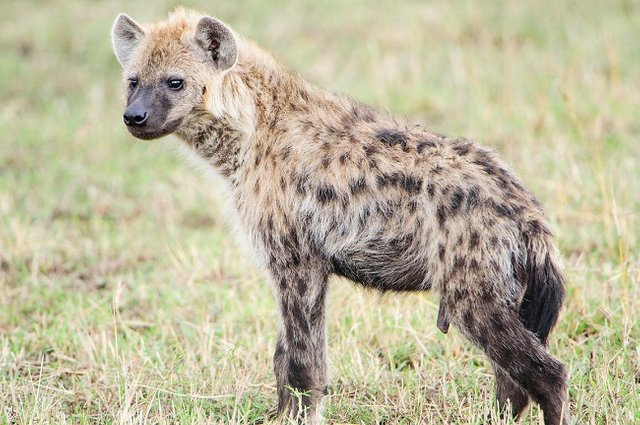
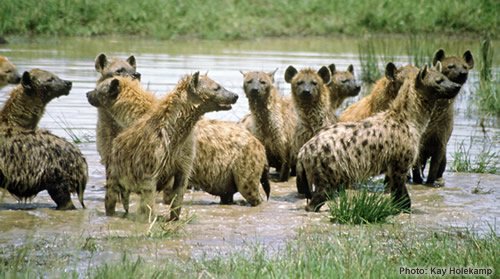

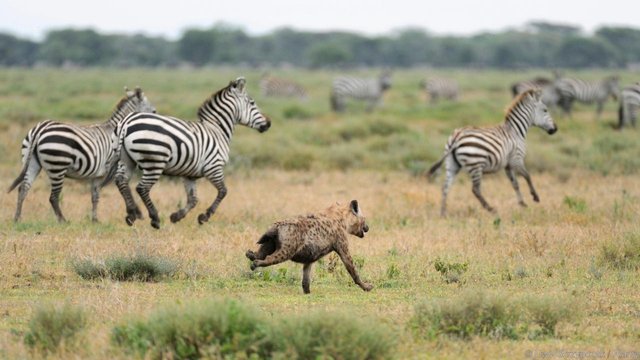

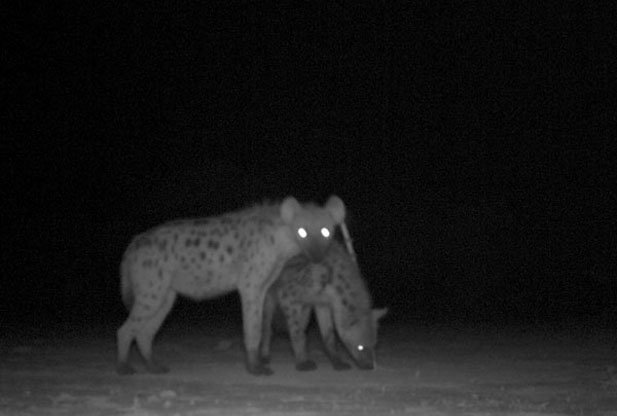
/spottedhyenaGE-57f3b9ec5f9b586c3597122d.jpg)
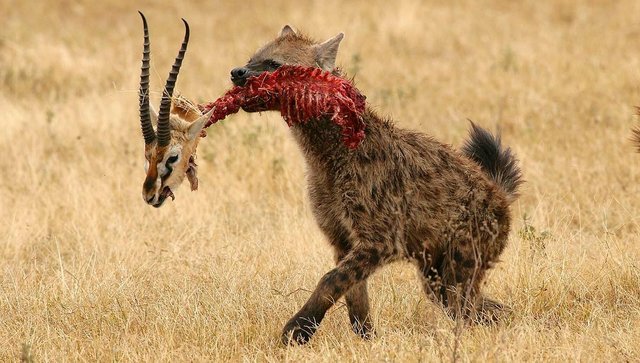
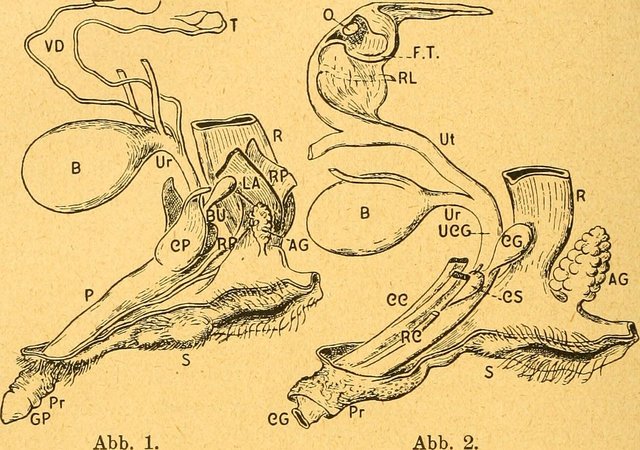
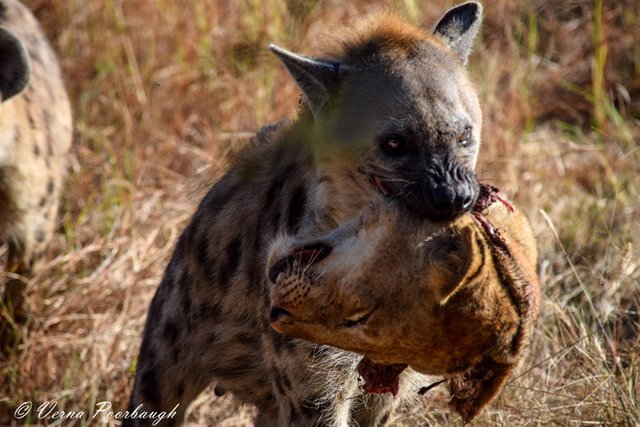
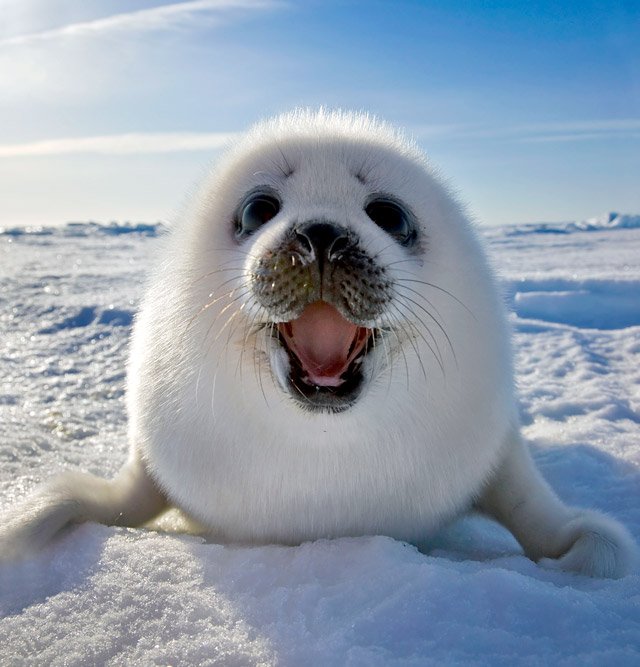
Very cool! The Lion King was a major setback to the Hyena species!
My memory fails me most the time but one vivid one I have, because I kept watching it, is that scene on that david attenborough show (see, bad memory), where the hyenas are actually living symbiotically with humans in one village, after generations of the humans feeding them leftovers. So cool
Oh that was incredible, it was Planet Earth 2! Though saying that, anything with David Attenborough narrating is amazing. Here’s an article about that episode :) https://www.google.co.uk/amp/www.mirror.co.uk/tv/tv-news/planet-earth-crew-feared-lives-9427266.amp - I would of wet myself if I was there Haha :)
There is an unfortunate stigma attached to these animals. Living in South Africa I'm somewhat used to the African-bush and all of its inhabitants (though I am yet to see a Leopard in the wild). Hyenas are fascinating animals and you will always see a power-struggle between them and the local pride of lions as they attempt to steal (scavenge) whatever the lions catch.
Funny and true story. I have a friend and they often visit our National Parks where you'll find the big 5 and most other African wildlife. They had once spent the night in an open-camp (no fences) and awoke the next morning to their Jeep 4x4, missing a large part of its front-bumper. Turns out a Hyena mistook it for a midnight-snack! You could see that it wasn't really chewed on, rather a bite was taken. Goes to show how strong their jaws are.
Thank you for the interesting article and photos. Keep up the good work!
@rionpistorius
I had the chance to witness hyenas both in zoos and in their element (in the Krueger park). Unfortunately, I can't tell which one of the four I saw. I may need to pay more attention the next time :p
Funnily enough, when visiting the Kruger park, the hyenas were standing around the truck we were, and as soon as we were stopping, they were trying to eat our tires ^^
That's amazing, i'm so envious!
You probably saw Spotted Hyena as they are the least shy species of Hyena and the most common in that area, all other Hyena species don't live in groups larger than 5-6 animals so if there were more than that it would've definitely been the Spotted.
As for the tires they generally try to eat anything that they can partially fit in to their mouth, there's a lot of stories of them even trying to eat Aluminium cans and metal buckets!
There were definitely more than 5-6. More on the level of 10 I would say (but this was 1 year ago already and my memory is not perfect).
You can check the picture on the other post I shared with you on the chat. Dunno whether it helps ;)
They are some bizarre, but amazing creatures!
I was in awe seeing Hyena up close last year, so different than their portrayal and such Interesting animals!
I will no longer watch "Animal planet" I will read you))
I hope that you continue to enjoy my posts as much as the Animal Planet then! (No pressure at all right? Haha)
They look so cute and innocent. If only the blood wasn't so red.
God bless you
What is a hyena scared of?
Spotted hyenas usually are killed by lions due to battles over prey. Apart from lions, spotted hyenas are also occasionally shot to death by humans hunting game. Not only are spotted hyenas destroyed for their flesh, but also sometimes for medicinal purposes.
A well detailed post. Very interesting to read read about them. More than them being projected as bad guys, I personally feel that they are unethical compared to that of other animals. What to do if the nature's selection is like that. It was a good read. Thanks for the article. :-)